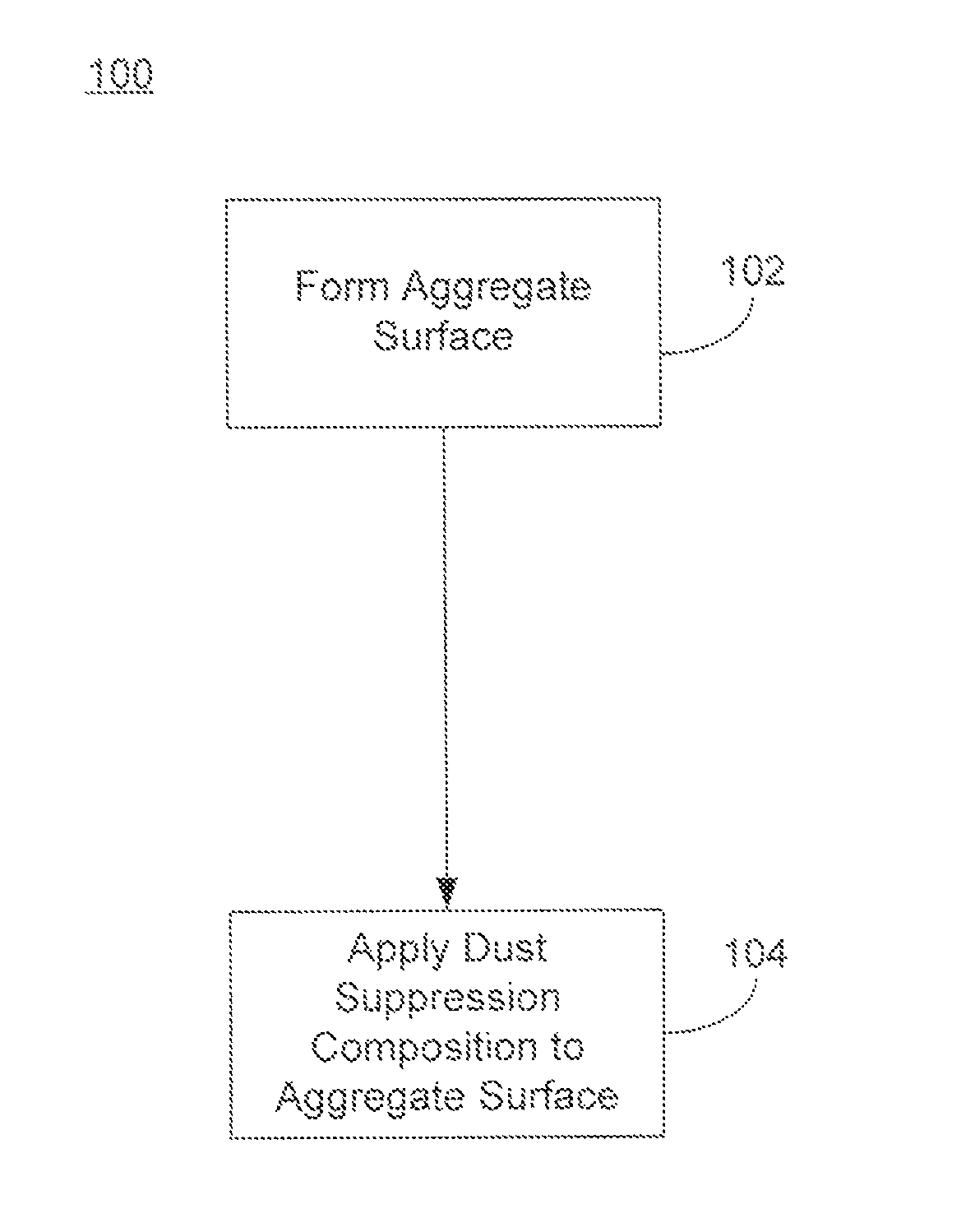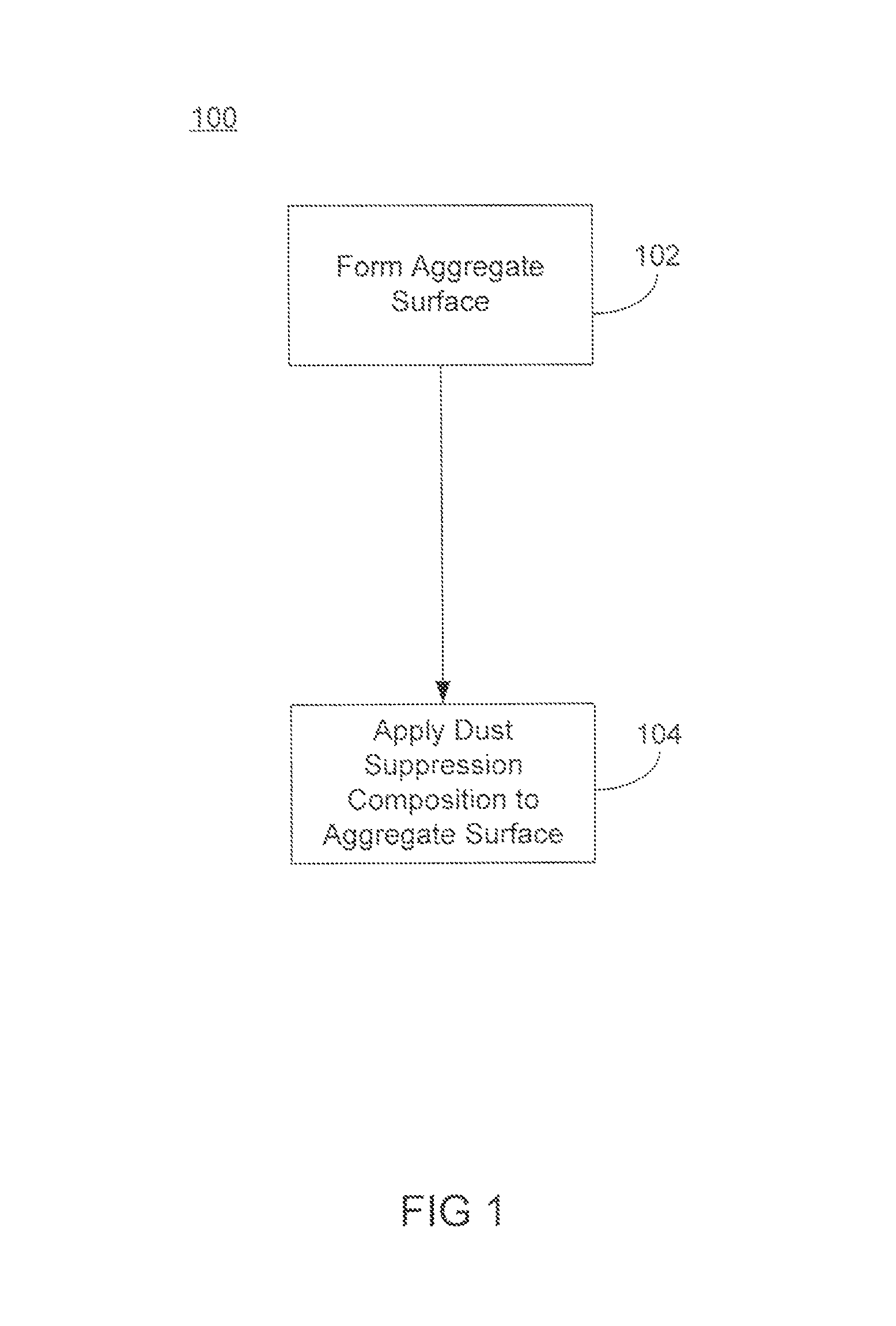Alkylcellulose and salt compositions for dust control applications
a technology of alkylcellulose and salt composition, which is applied in the direction of liquid/solution decomposition chemical coating, other chemical processes, ways, etc., can solve the problems of keeping the surface wet for even longer periods, and it is more difficult for rainwater to wash away salt from the surfa
- Summary
- Abstract
- Description
- Claims
- Application Information
AI Technical Summary
Benefits of technology
Problems solved by technology
Method used
Image
Examples
examples
[0030]Examples of how to make dust suppression compositions according to embodiments of the invention are described. These examples start with an aqueous brine solution containing 30 wt. % MgCl2, and 70 wt. % water. In one example, 0.05 wt. % of a high-molecular weight (e.g., 1,000,000 g / mol or more) hydroxyethylcellulose (HEC) polymer is added to the magnesium chloride brine solution. The HEC and brine solution was agitated for 3 hours to allow the HEC polymer time to fully hydrate in the aqueous solution. The resulting dust suppression composition had a viscosity of 158 cps measured at 60° F. By comparison, the pure 30 wt. % MgCl2 brine solution had a viscosity of 55 cps at the same temperature.
[0031]In another example, 0.20 wt. % of a mid-sized HEC polymer (e.g., about 300,000-500,000 g / mol) was added to same 30 wt. % MgCl2 brine solution, and allowed to hydrate for 3 hours. The resulting dust suppression composition had a viscosity of 211 cps at 60° F.
[0032]In still another exam...
PUM
| Property | Measurement | Unit |
|---|---|---|
| viscosity | aaaaa | aaaaa |
| depth | aaaaa | aaaaa |
| time | aaaaa | aaaaa |
Abstract
Description
Claims
Application Information
 Login to View More
Login to View More - R&D
- Intellectual Property
- Life Sciences
- Materials
- Tech Scout
- Unparalleled Data Quality
- Higher Quality Content
- 60% Fewer Hallucinations
Browse by: Latest US Patents, China's latest patents, Technical Efficacy Thesaurus, Application Domain, Technology Topic, Popular Technical Reports.
© 2025 PatSnap. All rights reserved.Legal|Privacy policy|Modern Slavery Act Transparency Statement|Sitemap|About US| Contact US: help@patsnap.com



